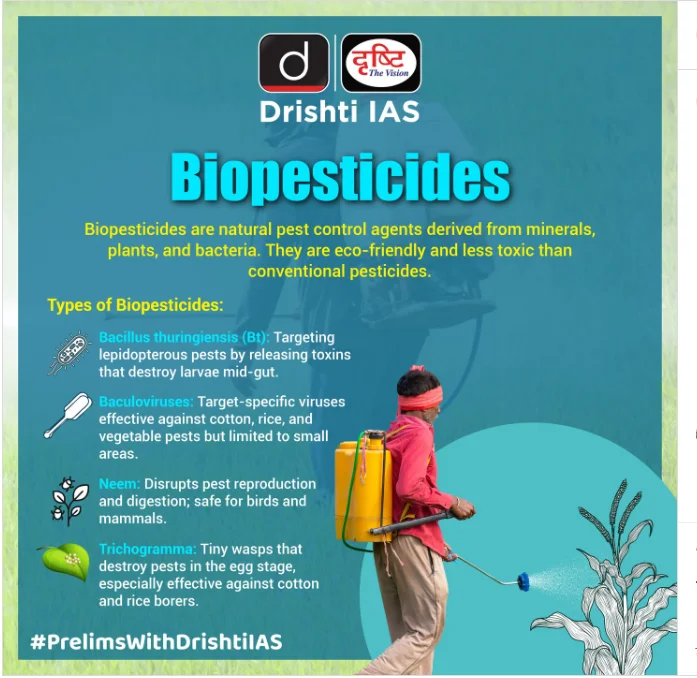Biopesticide for Cardamom Thrips | 30 Jun 2025
Why in News?
The ICAR-Indian Institute of Spices Research (ICAR-IISR), Kozhikode, has developed an eco-friendly biopesticide using the entomopathogenic fungus Lecanicillium psalliotae to effectively control cardamom thrips, a major pest affecting cardamom plantations.
What is Lecanicillium psalliotae-Based Biopesticide?
- About: A granular biopesticide has been developed using Lecanicillium psalliotae, a naturally occurring entomopathogenic fungus isolated from cardamom thrips (Sciothrips cardamomi).
- It infects pests by penetrating their outer layer and feeding internally, effectively targeting larvae, pupae, and adults. It acts on contact and belongs to the same group as Beauveria bassiana and Metarhizium anisopliae, widely used in biological pest control.
- Application and Benefits: The biopesticide is mixed with farmyard manure (FYM) and applied 3–4 times to plant basins.
- It is cost-effective, reduces chemical pesticide dependence, and promotes root growth and soil nutrient availability.
- Significance: It is eco-friendly and non-toxic, reducing environmental impact and health risks. It supports Integrated Pest Management (IPM) strategies, promotes sustainable agriculture, and ensures compliance with international residue standards in export-oriented crops like cardamom.
Note:
- Granular biopesticides are formulations in which the active ingredient, typically derived from natural sources such as microorganisms or plants, is embedded in or coated onto solid granules for easy application and controlled release.
What are the Key Facts Related to Cardamom?
- About: Cardamom (Elettaria cardamomum), popularly called the “Queen of Spices”, is a highly aromatic spice from the Zingiberaceae (ginger) family.
- It is indigenous to the evergreen rainforests of the Western Ghats.
- Climatic Conditions: Requires 1500-4000 mm of rainfall, temperatures between 10°C to 35°C, and thrives at altitudes of 600–1500 meters.
- Grows well in acidic, loamy, humus-rich soils with a pH of 5.0–6.5.
- Production: As of 2025, the top cardamom-producing countries are Guatemala (1st), India (2nd), and Sri Lanka (3rd).
- Kerala contributes 58% of India’s cardamom production along with Karnataka and Tamil Nadu as other major cultivating states.
- Newly Identified Species: Elettaria facifera (Periyar Tiger Reserve, Idukki) and Elettaria tulipifera (Agasthyamalai hills, Thiruvananthapuram and Munnar, Idukki).
UPSC Civil Services Examination, Previous Year Questions (PYQs)
Q. Lichens, which are capable of initiating ecological succession even on a bare rock, are actually a symbiotic association of (2014)
(a) algae and bacteria
(b) algae and fungi
(c) bacteria and fungi
(d) fungi and mosses
Ans: (b)
Q. Consider the following organisms: (2013)
- Agaricus
- Nostoc
- Spirogyra
Which of the above is/are used as biofertilizer/biofertilizers?
(a) 1 and 2
(b) 2 only
(c) 2 and 3
(d) 3 only
Ans: (b)

